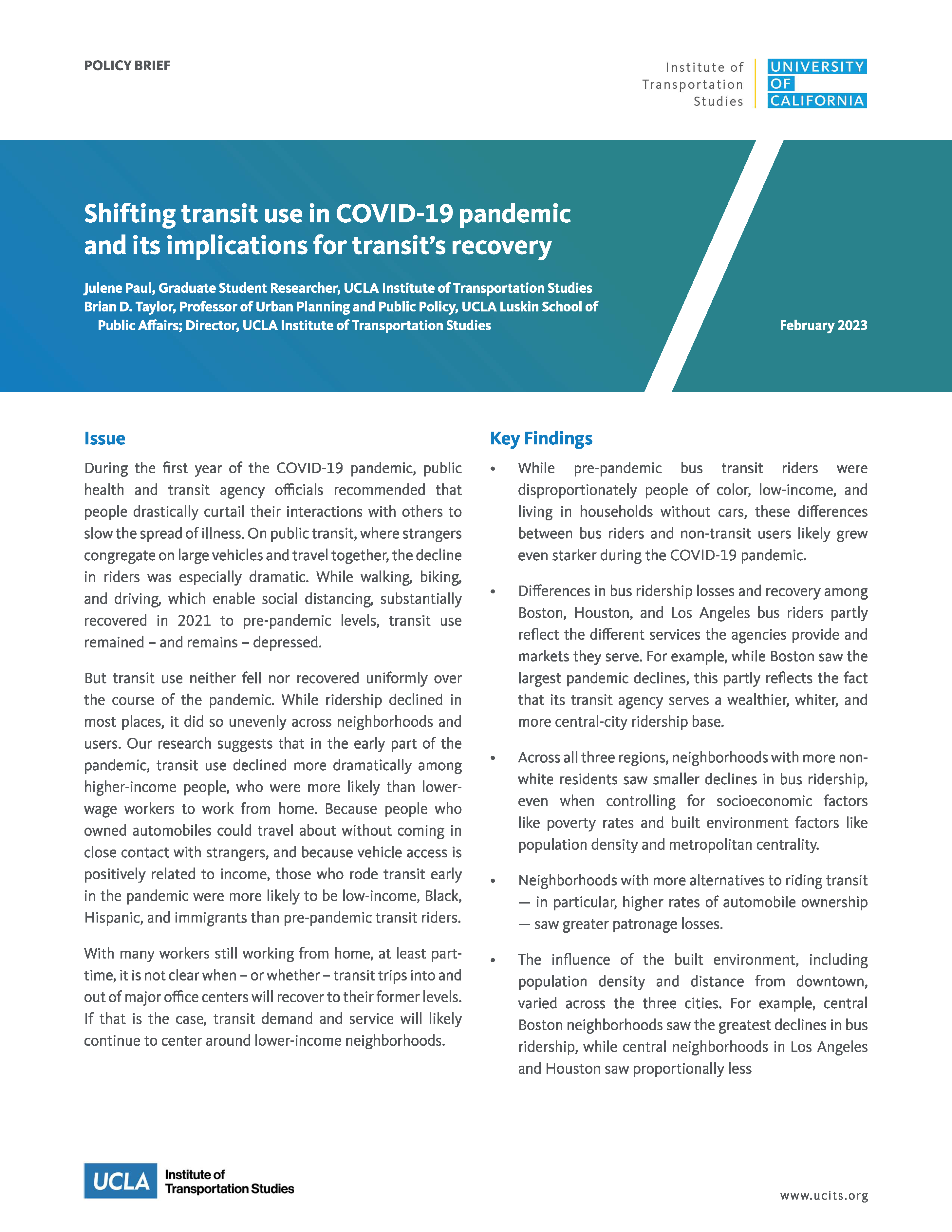Date: February 1, 2023
Author(s): Julene Paul, Brian D. Taylor
Abstract
During the first year of the COVID-19 pandemic, public health and transit agency officials recommended that people drastically curtail their interactions with others to slow the spread of illness. On public transit, where strangers congregate on large vehicles and travel together, the decline in riders was especially dramatic. While walking, biking, and driving, which enable social distancing, substantially recovered in 2021 to pre-pandemic levels, transit use remained – and remains – depressed.
About the Project
By the fall of 2020, most transit systems had recovered to about half of their pre-pandemic ridership, but transit’s recovery largely stalled there, even as rates of driving, walking, and biking have mostly recovered to pre-pandemic levels. Research has shown that the riders who left transit in the pandemic tended to be higher income, better educated, more likely white or Asian, and with access to private motor vehicles. Spatial patterns of ridership have shifted dramatically as well, with downtowns and other major job centers losing the most riders, and low-income neighborhoods retaining the most riders. In net, the level, timing, and direction of transit travel have changed dramatically.


